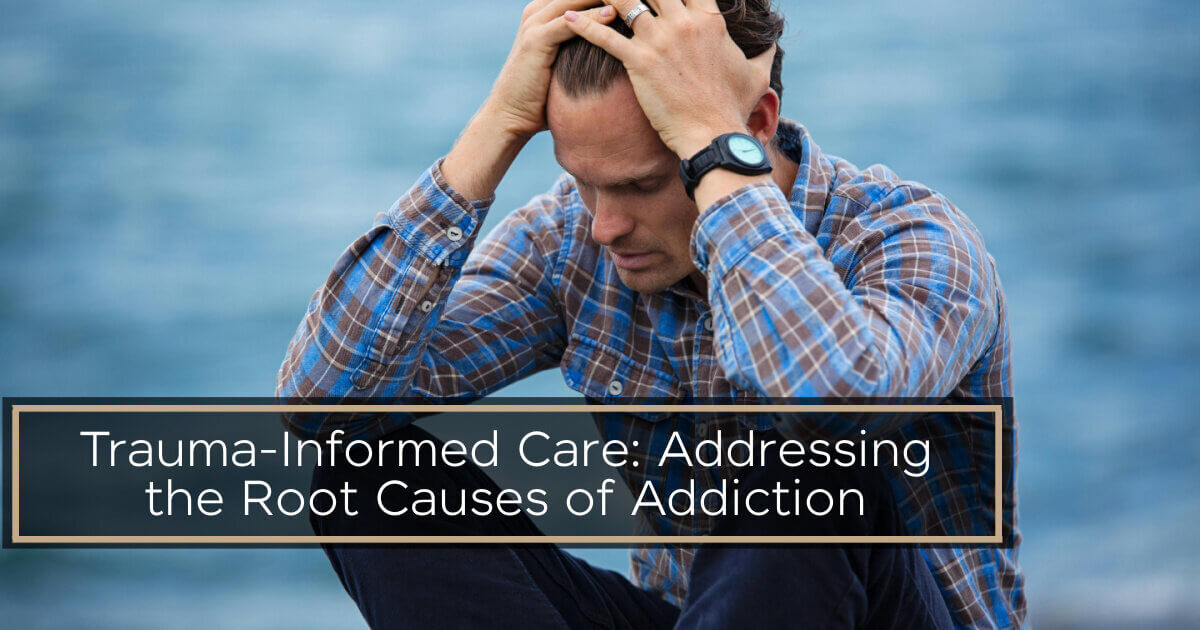Many patients may have been through more than one treatment program before walking through the doors of a well-known rehab facility. Each may have stayed clean for months before relapsing. He or she may have told their therapist that “Nobody has ever asked me about what happened when I was twelve” – This conversation could have changed his/her recovery journey for the better, for life!
This type of patient is not unique. Research shows that about 90% of people seeking addiction treatment report experiencing trauma, yet available programs seem to focus solely on substance use without addressing underlying wounds. This gap explains why relapse rates remain high and trauma-informed care has become essential.
Why Healing Past Wounds is Essential for Lasting Recovery
Your brain doesn’t just “get over” what happened to you. Many patients don’t fully understand why a backfiring car may send him/her into panic mode three years after his/her auto accident. The truth is that trauma rewires our neural pathways. Parts of your brain that should be calm before starting to work overtime, while other parts that help you process memories and basically go offline. It’s like your brain gets stuck replaying the same terrible movie, repeatedly.
An Addiction Treatment Specialist explained: “Imagine your brain’s alarm system stuck in the ‘on’ position. Substances temporarily turn down that alarm, but until you fix the alarm system, the person keeps reaching for whatever helps them cope.”
An Adverse Childhood Experiences (ACE) study found that children with four or more traumatic experiences are five times more likely to develop alcohol addiction and 46 times more likely to become injection drug users. These statistics represent millions whose addiction stems from unresolved trauma.
Traditional treatment often treats substances as the primary problem. However, trauma-informed care recognizes that the addiction is frequently a symptom of deeper wounds. When treatment addresses only the surface behavior without healing underlying trauma, recovery becomes much more difficult.
Understanding the Trauma-Addiction Connection: Beyond Self-Medication
The relationship between the two issues typically involves more than simple self-medication. Trauma alters how the brain processes stress, emotions, and decision-making. These changes create “toxic stress”—chronic hypervigilance that makes healthy coping mechanisms feel inadequate.
Consider childhood trauma specifically. When children experience abuse, neglect, or witness violence, their developing brains adapt to survive threatening environments. This may include becoming hyperaware of danger, shutting down emotionally, or learning to dissociate. These survival strategies become more problematic in adulthood.
A Trauma Specialist observed: “I’ve worked with countless clients who started using substances as teenagers, not to get high, but to feel normal. Their baseline was anxiety or emotional numbness. Drugs or alcohol temporarily provided what their brain couldn’t calm.”
The trauma-addiction cycle becomes self-perpetuating. Substance use may temporarily relieve trauma symptoms, but it creates new problems: shame, legal issues, damaged relationships, and physical health problems. These stressors often trigger memories of original trauma, leading to increased substance use.
Core Principles of Trauma-Informed Care in Modern Treatment
Trauma-informed care isn’t just another treatment method—it’s a fundamental shift in how treatment facilities operate. This approach recognizes that trauma affects everyone differently and requires individualized, compassionate responses.
The first principle emphasizes safety, encompassing both physical and emotional aspects. Treatment environments must feel genuinely safe for healing. This means more than just secure facilities; it encompasses how the staff interact with clients, how information is shared, and how potential triggers are effectively managed.
Trustworthiness and transparency form another crucial foundation. People who’ve experienced trauma often struggle with trust, particularly with authority figures. Trauma-informed programs operate with clear communication, consistent boundaries, and transparent decision-making. Staff receive extensive training in recognizing trauma responses and avoiding retraumatization.
Collaboration becomes central to treatment planning. Rather than treatment happening “to” someone, trauma-informed care emphasizes working “with” clients as partners in recovery. This collaborative approach helps to restore the sense of control that trauma often steals.
Cultural considerations play a vital role. Trauma commonly affects various populations in unique ways, influenced by historical, cultural, and systemic factors. Effective trauma-informed care acknowledges these varieties and adapts accordingly.
Creating Safety and Empowerment: The Path to Sustainable Recovery
Rather than simply removing substances, trauma-informed treatment teaches healthier coping strategies for handling difficult emotions and memories. This includes mindfulness techniques, creative therapies, somatic approaches, or evidence-based treatments such as EMDR (Eye Movement Desensitization and Reprocessing).
Support networks may receive special attention. Isolation often accompanies both trauma and addiction, so rebuilding healthy connections becomes essential through family therapy, peer support groups, or community integration activities.
Facilities implementing comprehensive trauma-informed care report better treatment retention, reduced relapse rates, and improved outcomes. More importantly, clients report feeling truly seen and understood, often for the first time.
Patients that have completed treatment months ago and have returned to share their story with new clients, often say that “They didn’t just treat my addiction,” they explain. “They helped me understand why I needed it in the first place. That made all the difference.”
By addressing trauma as the root cause rather than addiction as the primary problem, trauma-informed care offers hope for sustainable recovery and genuine healing.








